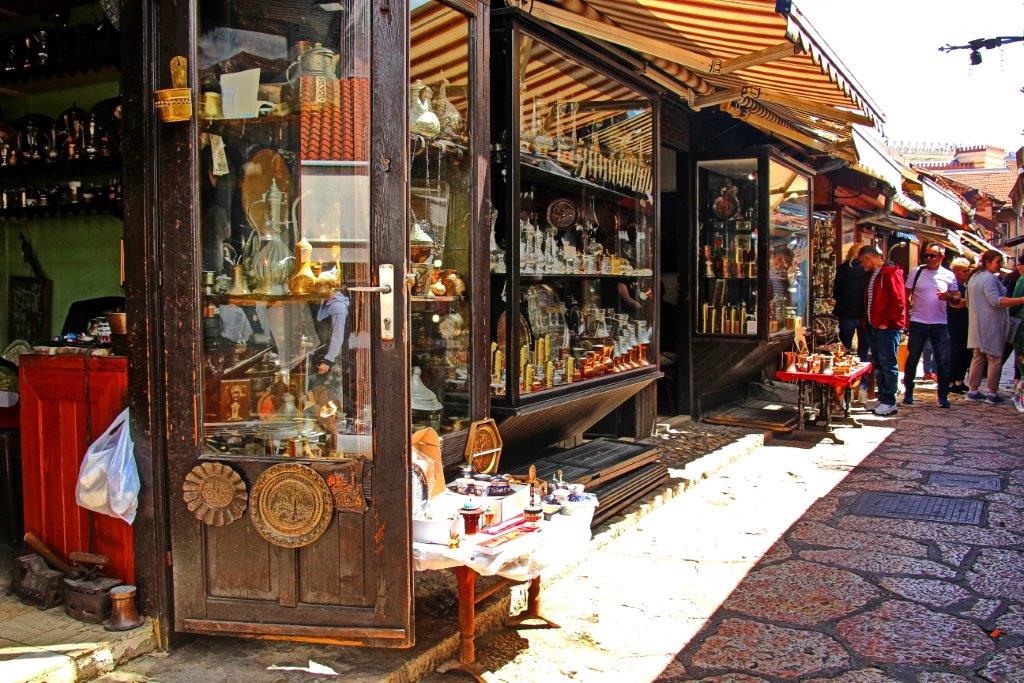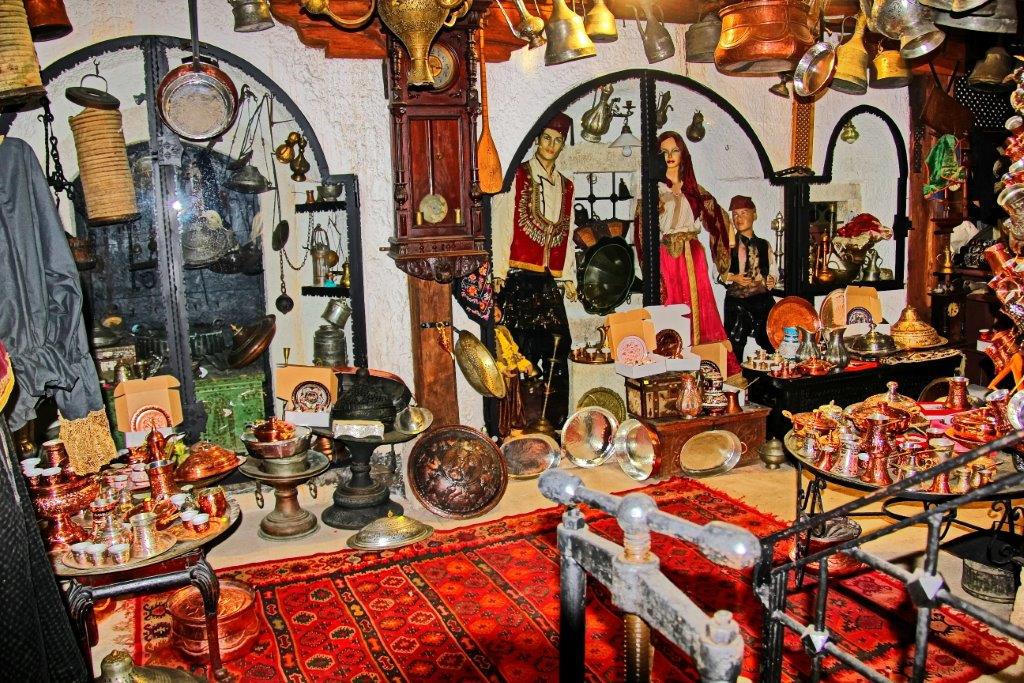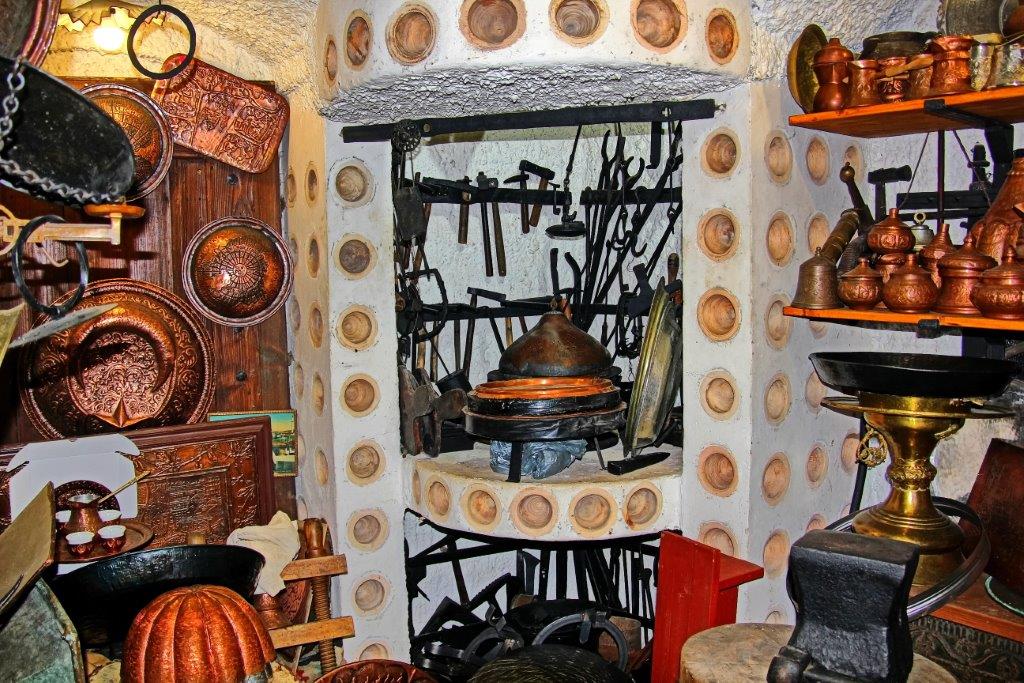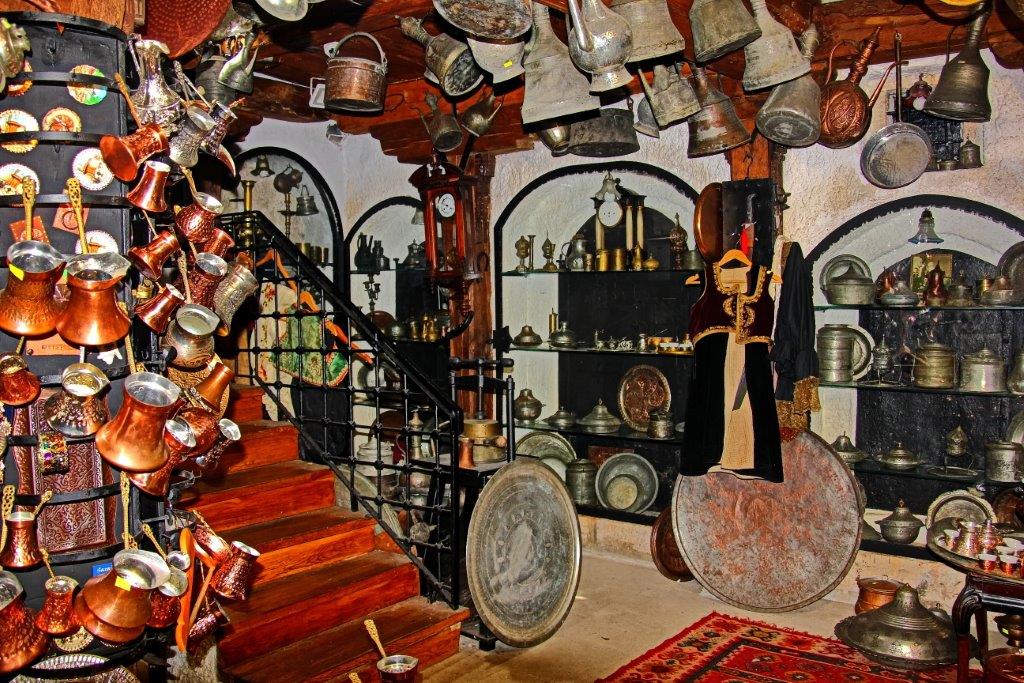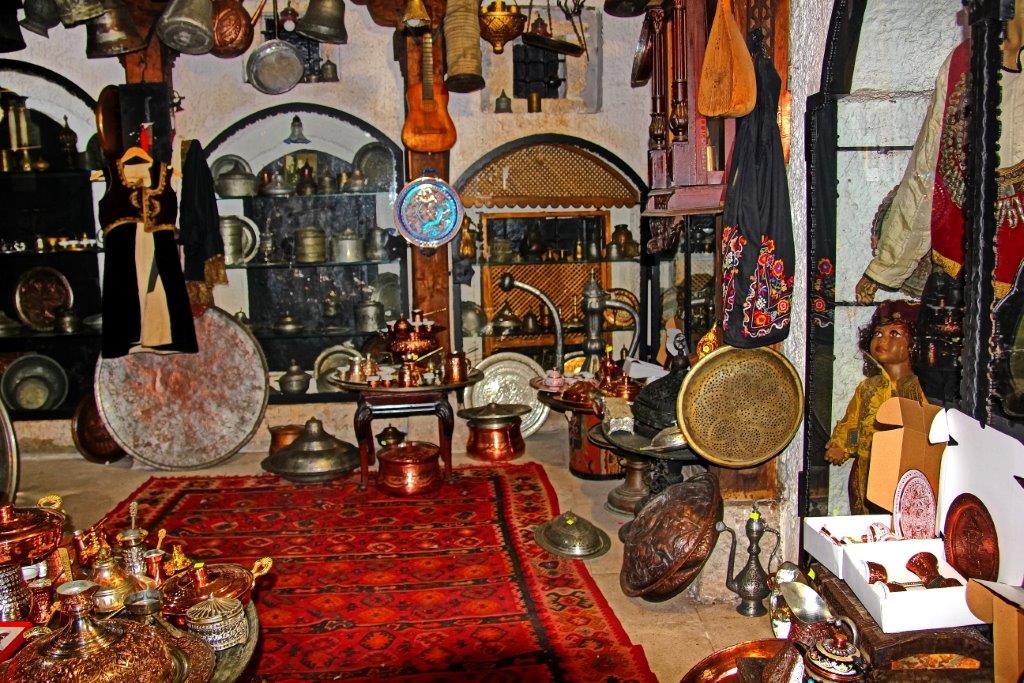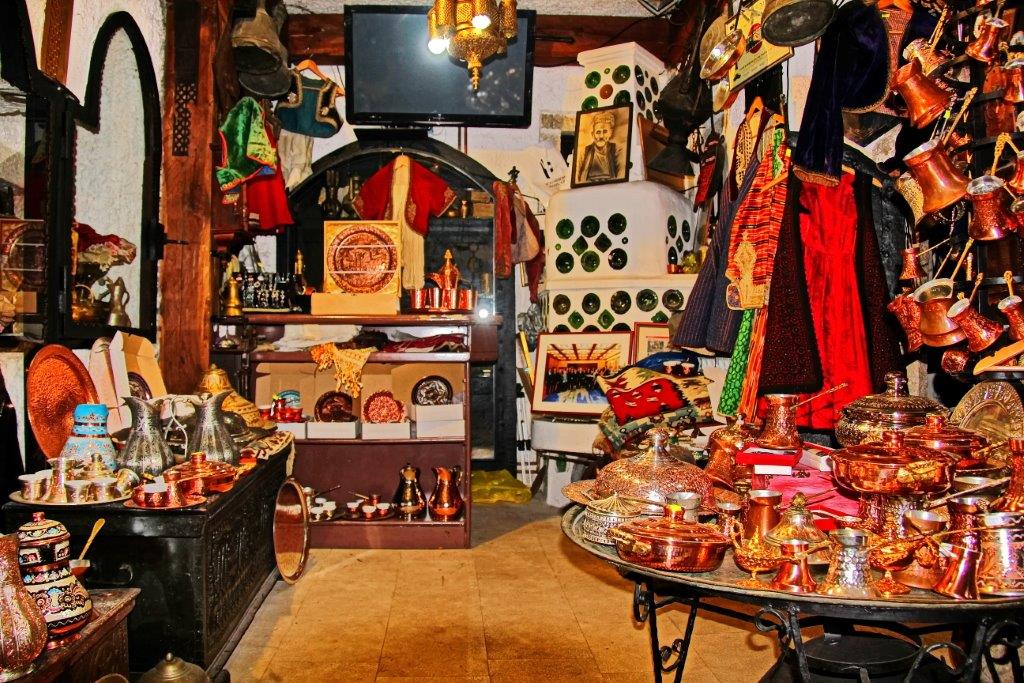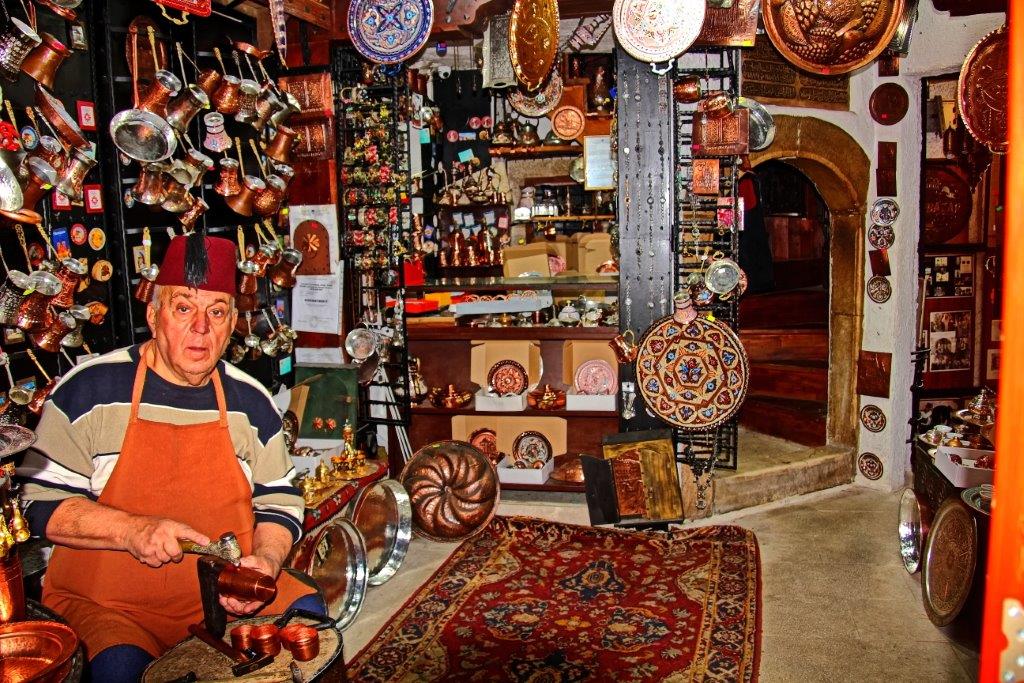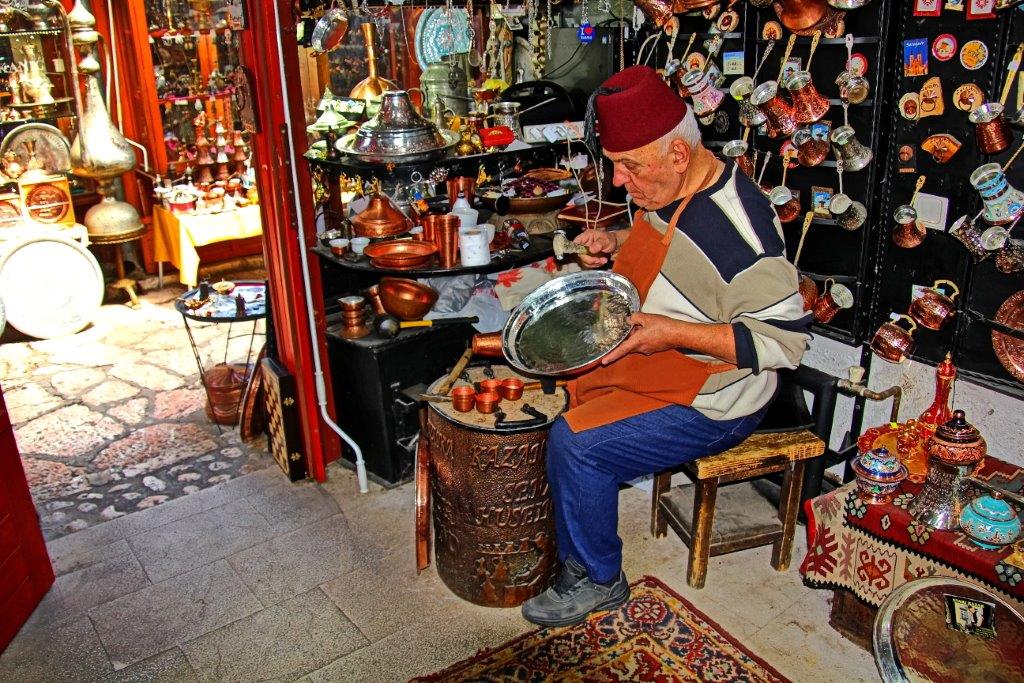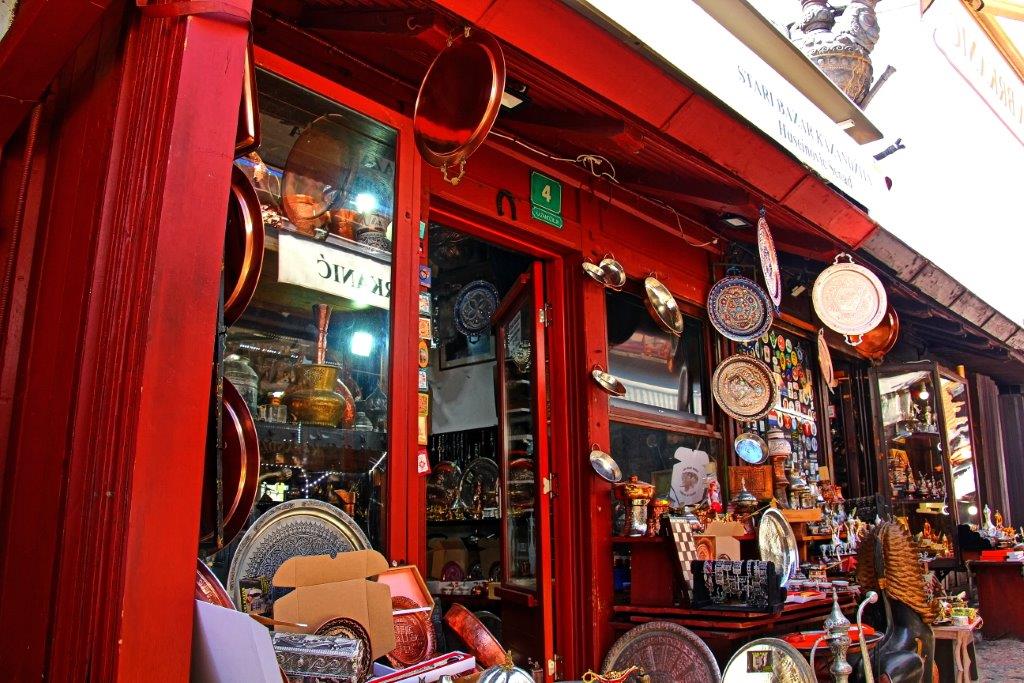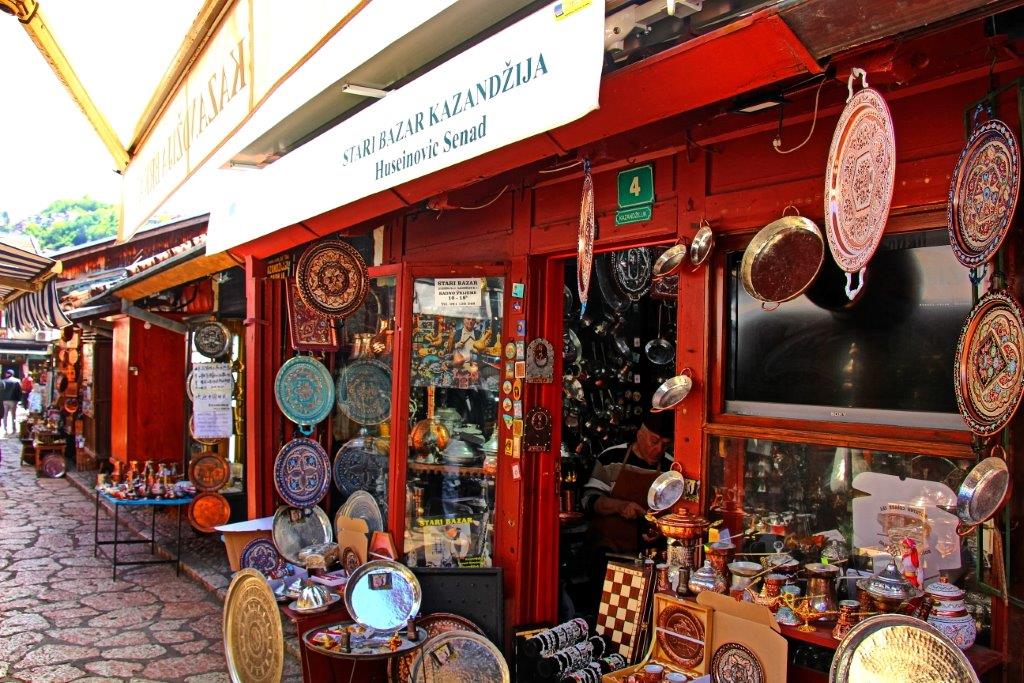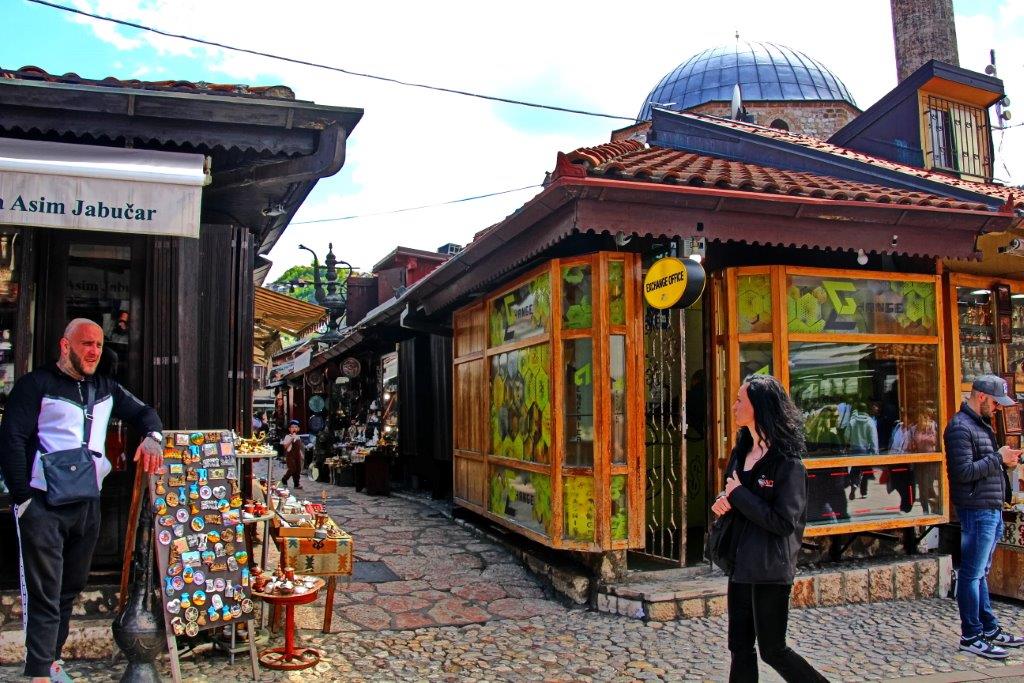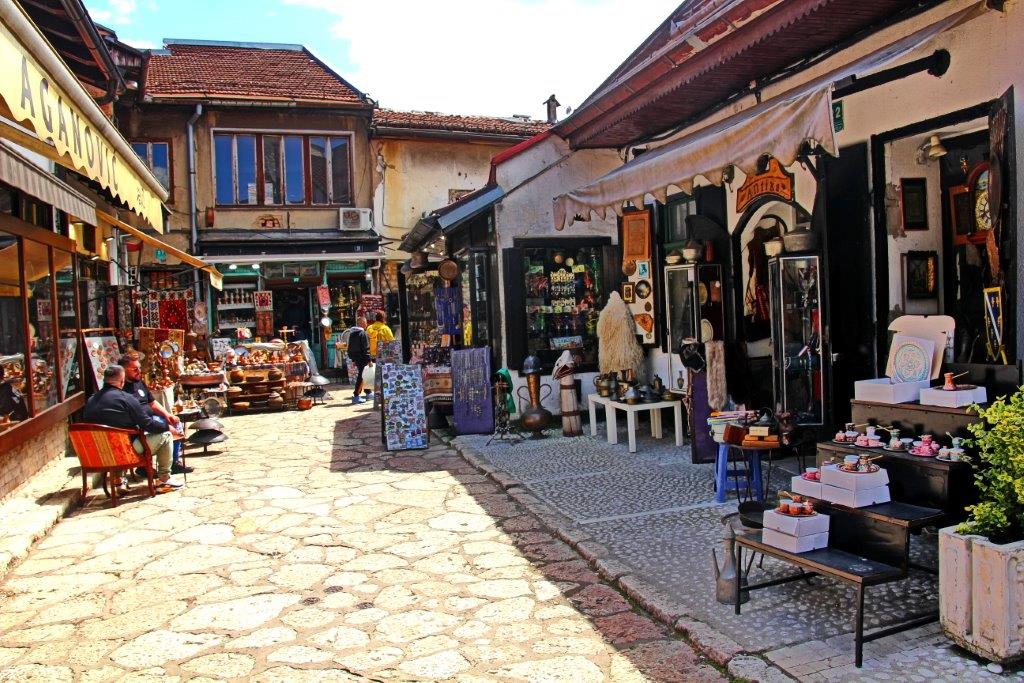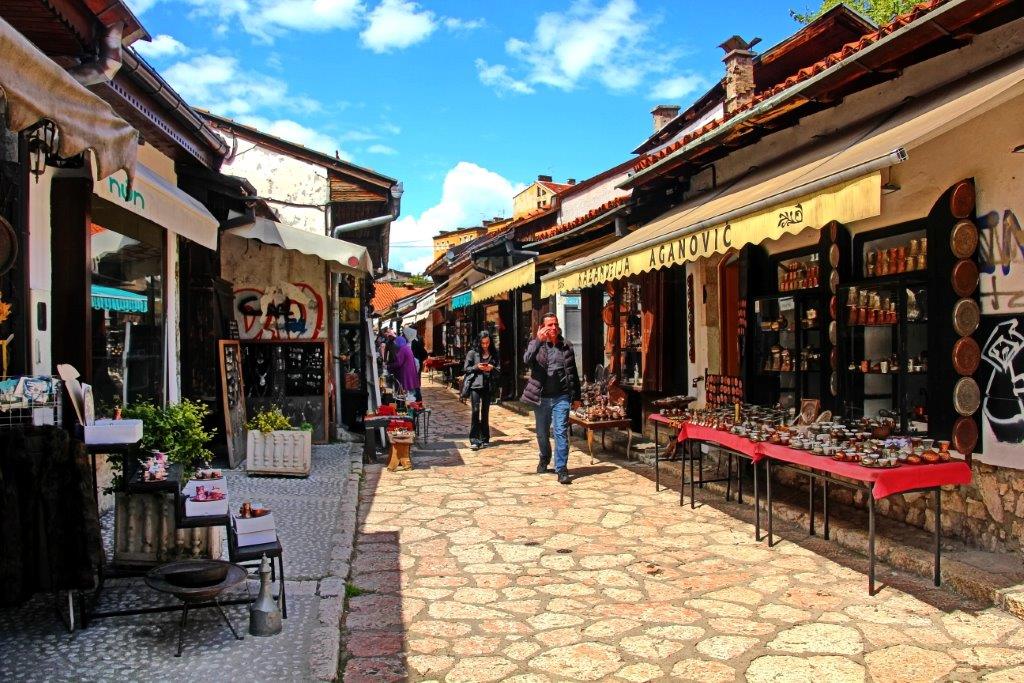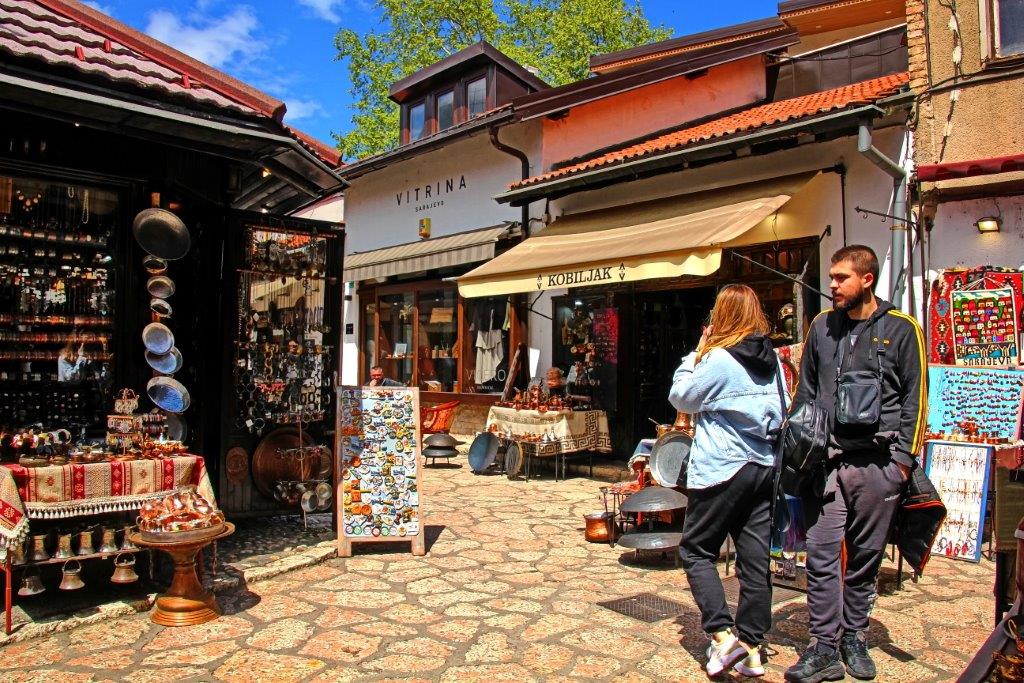Kazandžiluk, 500 years long tradition
Kazandžiluk is one of the oldest streets in Sarajevo’s Baščaršija. It starts at Baščaršija square and leads to the east, then turns sharply to the south and ends in Bravadžiluk. Traditional copper objects are made and sold there. A special copper engraving technique called filigree is used in the process.
Kazandžiluk Street came to its existence in the 16th century, at the time of the formation of the craft and trade core of Sarajevo. The bazaar was built on the land where the rich craftsman – a tanner Sagrakči hadži-Mahmut, the founder of today’s mosque on Ulomljenica, intended to build a mosque.
Small square
Various dishes and souvenirs were made of copper and sold in Kazandžiluk, which is what makes the street recognizable today. In the old oriental terminology, these artisans are called ‘kazandžije’, probably because at first in the Orient, precisely in the Ottoman Empire, they primarily made cauldrons (Turkish/Bosnian ‘kazan’) for the army.
A small square in today’s neighboring Luledžina Street was also a part of Kazandžiluk, where the stores of the coppersmiths from that first bazaar are placed, so before it was called Mali kazandžiluk, then Ibrikčijska čaršija, then Oprkanj and, finally, Luledžina Street.
This store area became a new street named Mali kazandžiluk, that is, it was separated from Kazandžiluk street in 1931. The ambient ensemble – Kazandžiluk, Male Daire and Luledžina Street in Sarajevo was declared a national monument of Bosnia and Herzegovina in 2021.
While in other streets named after crafts in Baščaršija, these crafts have practically disappeared, only Kazandžiluk has remained the same for more than 500 years. This included kazandžije (artisans who made various objects from copper, mainly dishes for food serving, drinking and water) and kalajdžije (artisans who covered these objects with tin).
Since the arrival of the Turks, this craft has been maintained in Sarajevo until today. Sarajevo supplied all of Bosnia and Herzegovina with these products, and they were also exported to other countries. Only 50 years ago, these artisans made more than 70 different products, and their tools consisted of more than 70 different tools, and no other craft surpassed them in this regard.
Nowadays, their products are not few. The main raw materials for the mentioned crafts are copper, tin or pewter, ammonium chloride and lead. Only charcoal was used for the fire. Turks brought copper dishes to the Balkans, including Bosnia. The Turks received these dishes from the Persians, as evidenced by the numerous names of the dishes and tools.
Witty artisans
Hadija Kreševljaković in the article “Guilds and trades in old Sarajevo” says: “Each shop had a fireplace, because this craft, like blacksmithing, cannot be imagined without fire… In 1489, only one coppersmith worked in Sarajevo… In 1530, thirteen coppersmiths and five tinsmiths worked in Sarajevo, and they lived in eight neighborhoods… In 1848, the coppersmith trade had 60 members over the age of 18, and in 1947, only 31 coppersmiths worked. The union of these artisans could have been formed as early as the beginning of the 16th century… There are families in this guild whose members have been engaged in the trade for 150 years or more. Ramić and Spaho families are among those, and to some extent the Sabur and Hadžišabanović families… Even after the abolition of the guilds, until the First World War, coppersmiths used to elect some kind of leaders called čehaja and čauš. Their last čehaja was Hadži-Husein Smajiš, and the last čauš was Hadži-Omer Gvozden; the first died in 1915, and the second in 1923.
Witty craftsmen from Kazandžiluk make beautifully carved pencils out of bullet casings from the past war, and umbrella holders out of shell casings – they make something beautiful out of the ugly with their skillfull hands…
One of the most interesting shops, Stari Bazar, is decorated with a huge water pot above the entrance, and its owner Huseinović Ismail (the shop is officially run by his son Senad) will guide you through the beautifully decorated small museum located in the basement of the shop – with a collection of Bosniak folk costumes, ethnographic objects and antiques in general, with furnaces with pots, and of course all possible products of this craft.
Master Ismail is an inexhaustible source of information about his craft and antiques, and the life of Baščaršija. Therefore, don’t pass by Kazandžiluk without stopping by his shop!
Author: Tarik Dreca


